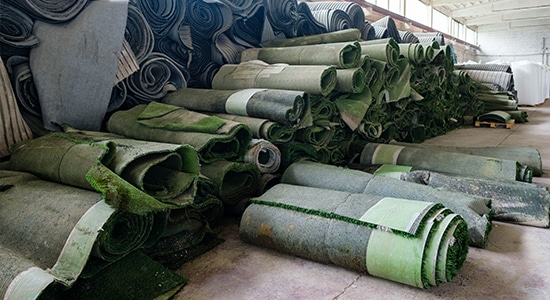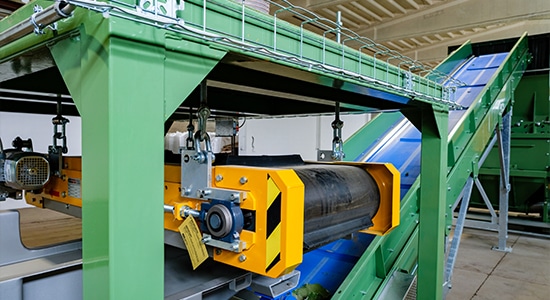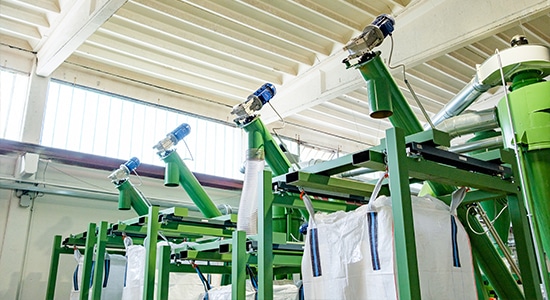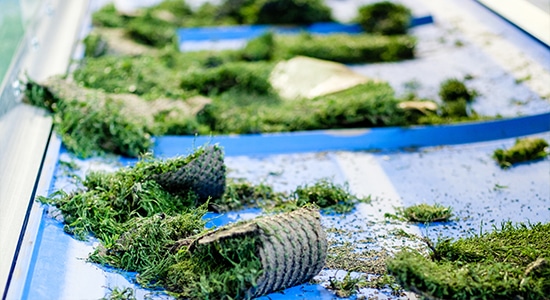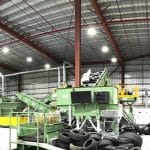Synthetic turf recycling plant | patent process for used artificial grass
Used Synthetic turf, or artificial grass, is the new waste that by our patent process will be recycling.
The new generation waste… old synthetic turf football fields.
They now represent the choice of the new millennium on which to practice sports.
Not only for football but also for padel, tennis, garden.
We find the synthetic turf product everywhere. Atmospheric agents and wear degrade it over time and our plant works to be able to recycling it into secondary raw materials for new uses.
The aim to recycling artificial grass
Plant is capable of recycling rolls of synthetic turf including infill and obtaining the materials it is made of by shredding, granulating and separating. The convenience of rolling it up means that disassembly is quick and economical and that no dispersion of microplastics into the environment is created.
Patent and Know How of Synthetic Turf Recycling Plant
Tires has the patent for technological production only, reference EP20962111B1. Currently the only priority shredding and separation process patent at European level. This clarification is very important as a new operator of used synthetic turf recycling is required to inform himself about the fact that by installing patent-infringing production technology, he will be subject to legal action to protect the invention. Same manufacturer of the system in the case of use of the same technology is defined as a counterfeiter and therefore also legally responsible for the offense.
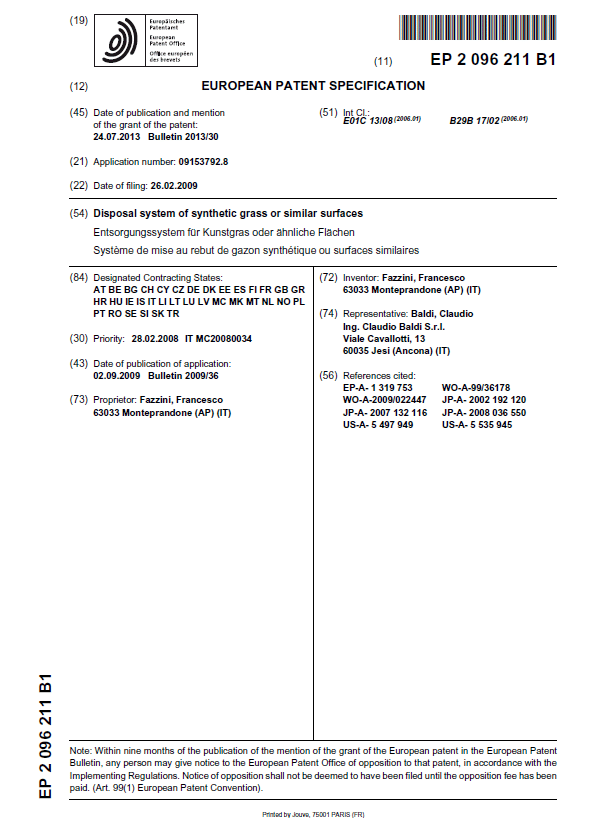
Capacities of Recycling Plant
Production capacity in terms of weight depended on the type and quantity of sand and polymer infill that is included but we at TIRES, in order to parameterize a number that corresponds to the actual reality, declare over 400,000 m2/year with a 16-hour daily process. More specifically, there is the possibility of recycling up to 57 eleven regulation football fields per year.
Outgoing products from the plant
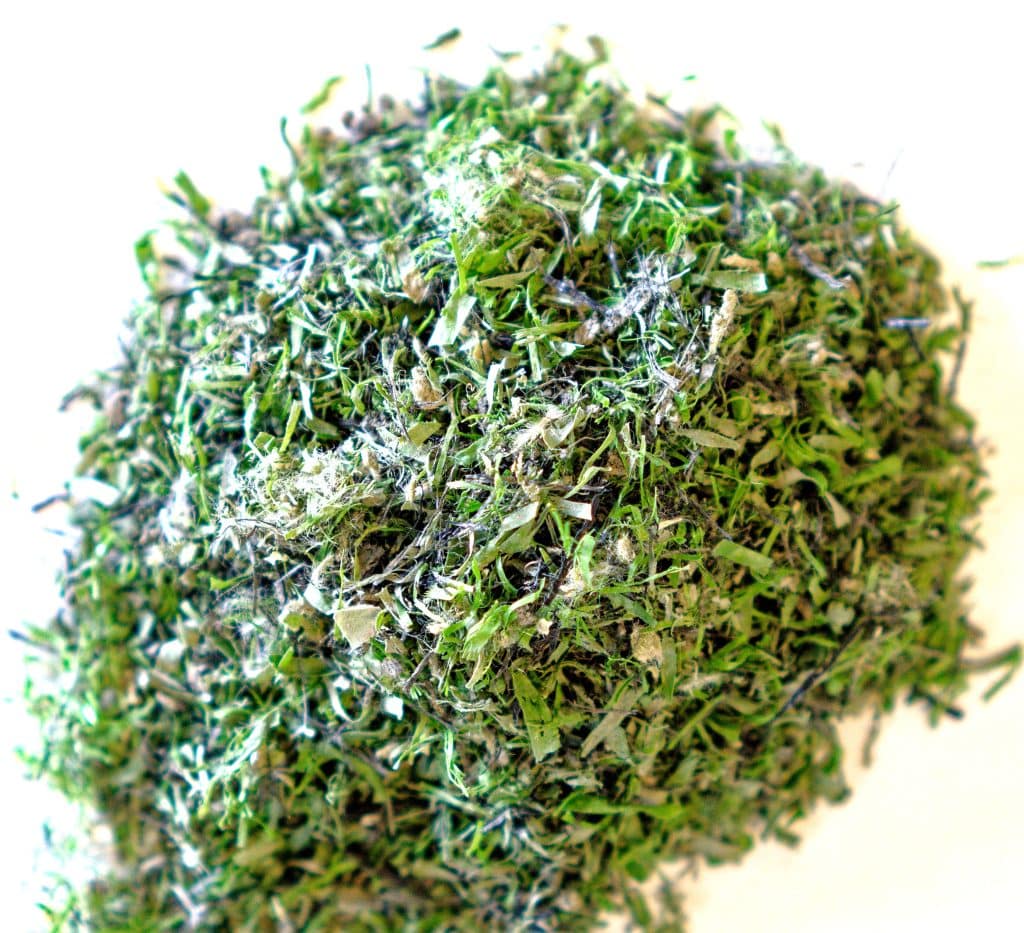
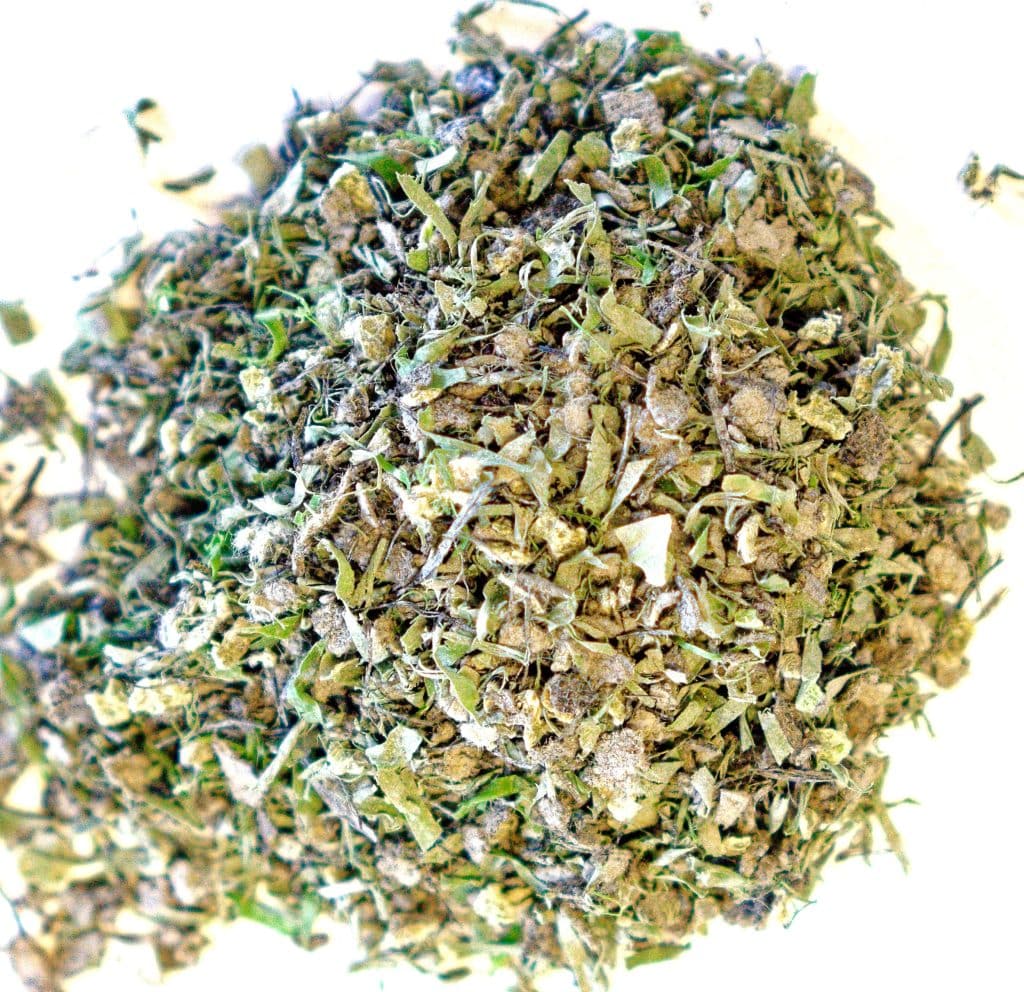
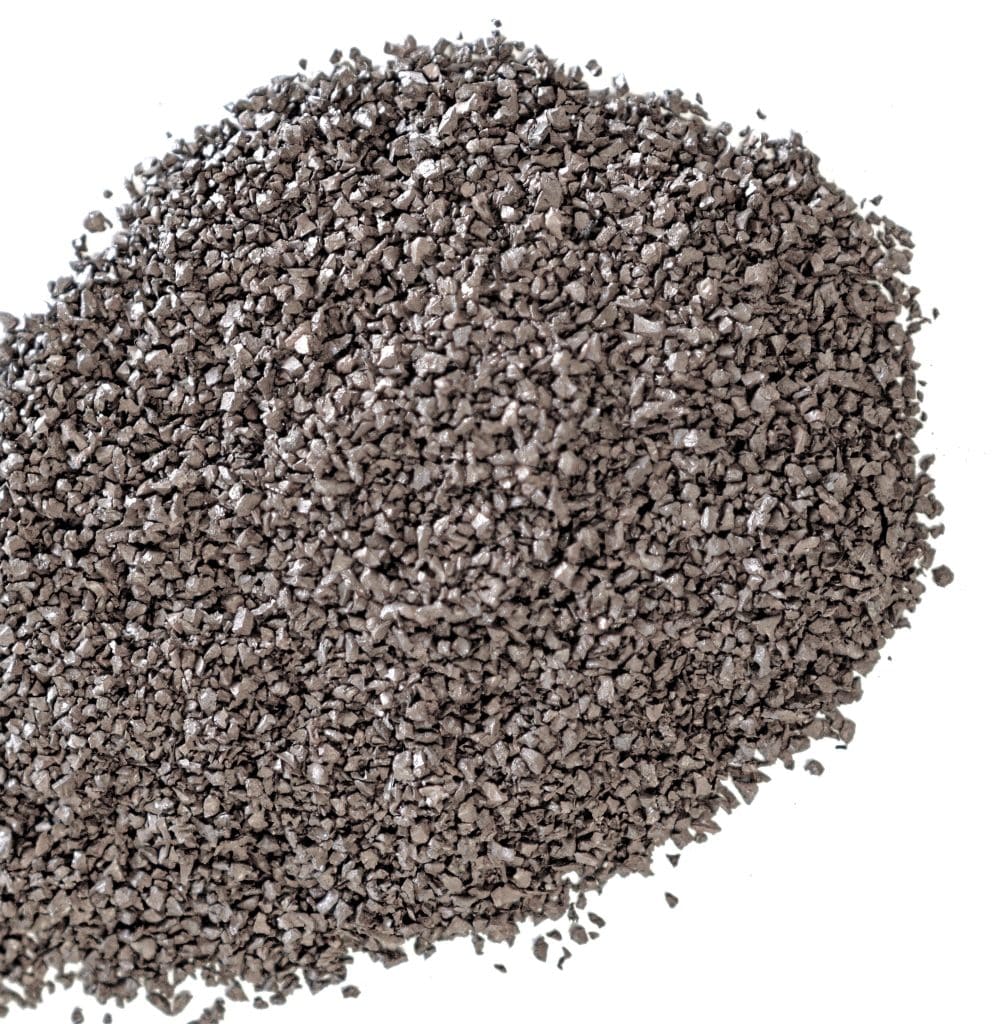
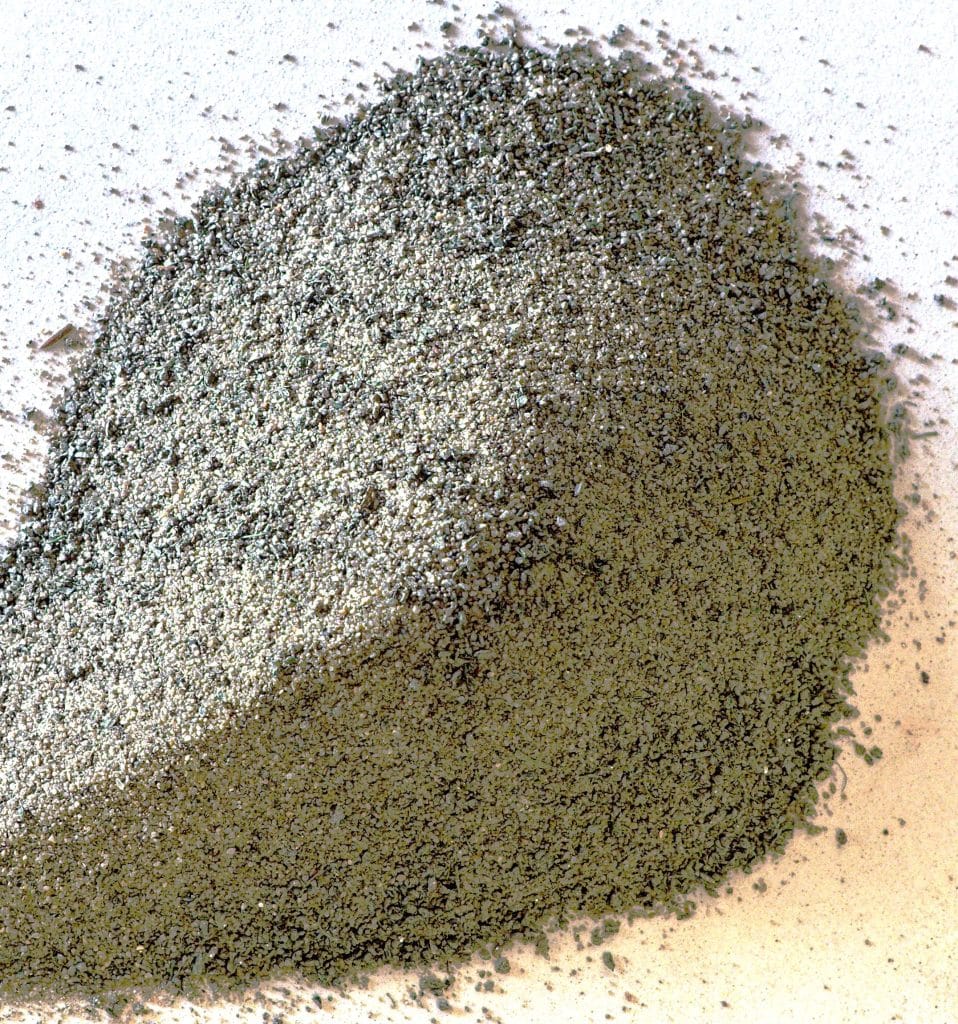
Quality of the outgoing product depends on the materials it is made of, their mixes and the grain sizes used.
Our processing concept involves placing rolls containing infill coming from the same synthetic grass field at the loading point. By doing this it is possible to optimize the separation setup for the entire plant in order to produce the least amount of output waste.
Production reuse markets
PP/PE synthetic turf filaments: after a further compound extrusion process with forced feeding, it can be used for the production of plastic products. The possibility of adding virgin polymers and fillers to it makes it adaptable to multiple uses in the moulding sector.
Backing: it also contains the part of the adhesive with which the rolls of synthetic turf are joined when installing the football field. It can be used in cement aggregates as a lightening material offering elasticity properties.
Rubber granules: If it is the only performance component in the roll of synthetic grass, the degree of cleanliness is very high to be recoverable in the infill production processes for new synthetic turf fields or for the production of rubber products.
Silica sand: Silica sand through filtration to be defined based on the final application is a widely consumed product for recovery both in the synthetic turf sector for sports and for the production of plant compost and for the creation of roundabouts and racetracks for horses.

